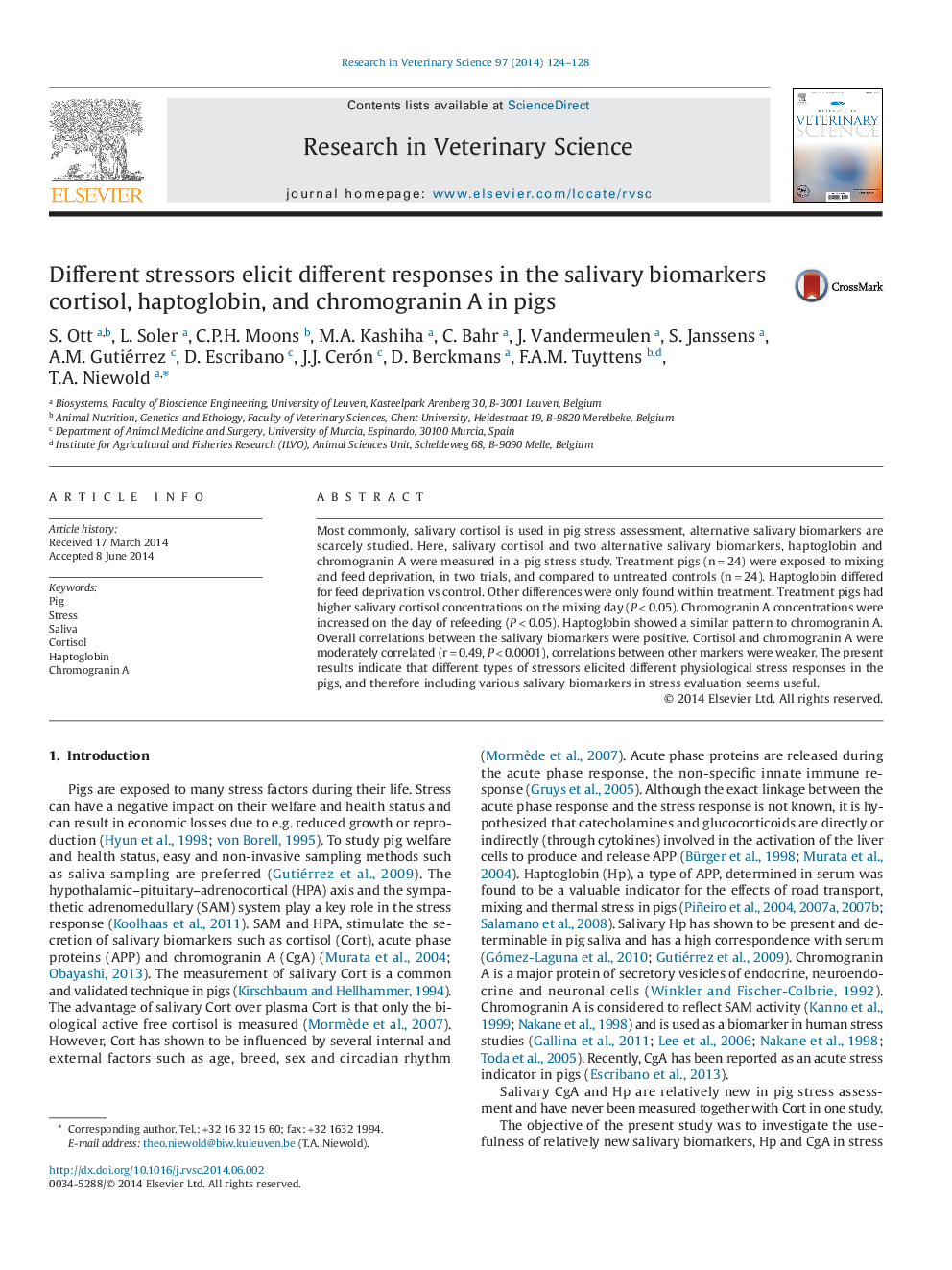| Article ID | Journal | Published Year | Pages | File Type |
|---|---|---|---|---|
| 2454913 | Research in Veterinary Science | 2014 | 5 Pages |
•We aimed to find salivary markers for stress other than cortisol in pigs.•Pigs were subjected to mixing and feed deprivation stress.•Salivary cortisol, chromogranin A and haptoglobin were positively correlated.•Responses of the respective salivary biomarkers differed between stressors.•Including various salivary biomarkers in stress evaluation seems useful.
Most commonly, salivary cortisol is used in pig stress assessment, alternative salivary biomarkers are scarcely studied. Here, salivary cortisol and two alternative salivary biomarkers, haptoglobin and chromogranin A were measured in a pig stress study. Treatment pigs (n = 24) were exposed to mixing and feed deprivation, in two trials, and compared to untreated controls (n = 24). Haptoglobin differed for feed deprivation vs control. Other differences were only found within treatment. Treatment pigs had higher salivary cortisol concentrations on the mixing day (P < 0.05). Chromogranin A concentrations were increased on the day of refeeding (P < 0.05). Haptoglobin showed a similar pattern to chromogranin A. Overall correlations between the salivary biomarkers were positive. Cortisol and chromogranin A were moderately correlated (r = 0.49, P < 0.0001), correlations between other markers were weaker. The present results indicate that different types of stressors elicited different physiological stress responses in the pigs, and therefore including various salivary biomarkers in stress evaluation seems useful.
